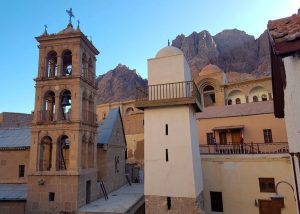A 5.3-magnitude earthquake that struck the Mount Athos peninsula in northern Greece has caused structural damage to several centuries-old monasteries in the region, according to a team of experts conducting on-site inspections. While no injuries were reported, concerns are mounting over the potential long-term impact on the region’s irreplaceable religious and cultural heritage.
Mount Athos—an autonomous monastic community and UNESCO World Heritage site—is home to 20 Eastern Orthodox monasteries and numerous smaller hermitages. Access is heavily restricted and granted only to men, mainly pilgrims and clergy. It is widely regarded as one of the most spiritually and historically significant regions in Eastern Christianity.
Damages Found but No Immediate Structural Threat
The quake, which occurred on Saturday, June 7, primarily affected architectural elements in four of the monasteries: Docheiariou, Xenophontos, St. Panteleimon, and Simonopetra. According to a joint inspection team from the Technical Chamber of Greece, the Center for the Preservation of Athonite Heritage (KEDAK), and the Civil Engineering Department of the Aristotle University of Thessaloniki, the buildings remain structurally sound, but critical restoration is urgently needed.
Cracks in masonry, fallen roof tiles, collapsed plaster, and even dislodged chandeliers inside altars were among the damages reported. Particularly at Simonopetra Monastery, structural columns between windows were also compromised.
“These are not damages that threaten the immediate stability of the buildings,” said the head of the inspection team, “but given the historic and cultural significance of these sites, even minor damage can lead to major losses in the event of a future earthquake.”
Risk to Priceless Heritage
While the monasteries’ main structures withstood the tremor—thanks in part to previous conservation efforts—experts warn that failing to act now could endanger irreplaceable features such as domes, frescoes, and mosaics. The team emphasized the urgent need for preventative repairs to prevent future damage.
“For example, a cracked drum supporting a dome might not be critical today, but in another strong quake, it could collapse, taking with it priceless religious artwork,” said the inspection leader.
Early Estimates and Ongoing Inspections
The preliminary estimate for the cost of repairs ranges between six and seven million euros, though officials note that this figure may rise after further inspections are completed across more monasteries in the coming days.
The team has already installed a seismic monitoring device at Xenophontos Monastery and plans to install additional equipment in other sites to better understand how future tremors could affect the area’s fragile structures.
In the coming week, inspections will continue at other monasteries, with particular focus on those closer to the quake’s epicenter. A full report will be submitted to Greek authorities by the end of the week, including recommendations for urgent restoration and long-term seismic resilience planning.







